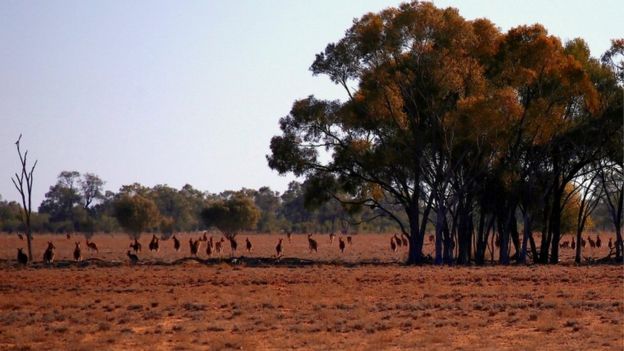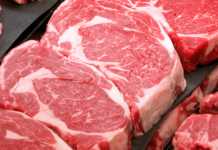Landholders and ecologists in Australia are warning wild kangaroo levels have become unsustainable, urging Australians to eat more kangaroo meat.
Government figures show there were almost 45 million kangaroos in 2016, which is almost double the human population of Australia.
In 2010 the number was only 27 million, with the sharp rise blamed on rainy conditions producing wealth of food.
But many fear millions could starve if a dry summer produces a drought.
Australia has strict regulations about the humane killing of the animals. Each state has rigid quotas on commercial shooting licences and species culling, based on sustainability levels.
Local media report that most available commercial cull licences are not being taken up because of low trade prices and a lack of demand.
Each year the cull provokes controversy, with opponents suggesting there is no evidence that reducing kangaroo numbers helps the environment.
The carcases of culled animals can be used for their hides and leather, which are then sold or exported.
But their meat is often wasted because of a lack of demand, according to the Australian government’s environmental website.
Because kangaroos are Australia’s national animal, eating of their meat remains quite stigmatised.
 Image copyrightREUTERS
Image copyrightREUTERSSome Australians view it as novelty produce for visiting tourists seeking “bush tucker” meats such as emu and crocodile.
- Eating Skippy: Why Australia has a problem with kangaroo meat
- Why Kangaroo culling divides Australians
The meat’s proponents say kangaroo meat is low in fat and because the animals produce less methane than other farmed animals, they are more environmentally friendly.
Professor David Paton of the University of Adelaide told ABC that people needed to support kangaroo culling to protect other parts of the country’s ecology and stop the animals “rotting”.
“It’s not the kangaroos’ fault they’re overabundant, it’s probably we’ve just been too reluctant to take a stick to them, remove them out of the system sooner, to actually prevent the damage being caused,” he said.
“If we’re going to cull these animals we do it humanely, but we also perhaps should think about what we might use the animals that are killed for.”

